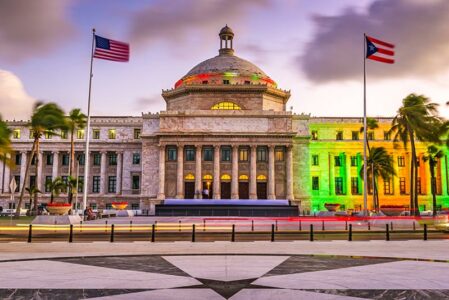Building back safer and stronger: A roadmap for Puerto Rico
This op-ed by IEM VP Bryan Koon appeared in The Hill on January 24, 2018.
Four months ago, Hurricane Maria brought untold devastation to the island of Puerto Rico. Countless lives were lost, communities were upended, and billions of dollars in damages were left in the storm’s wake.
From the wreckage, we have seen communities emerge and come together; strangers becoming neighbors and neighbors becoming family. The people of Puerto Rico have demonstrated incredible strength.
Unfortunately, while the resilience of the people is obvious, the infrastructure is less so. Long after Maria made landfall in Puerto Rico, the island is still being tested, with a significant number of communities still without power, safe drinking water, or reliable housing.
As former director of Florida’s Emergency Management Department I recognize the threat residents face from hurricanes. I also know that we are not powerless when it comes to lessening the burden communities can face from disasters. Today, as Puerto Rico continues its recovery it is vital that officials work together to build back the island’s infrastructure safer and stronger.
This tragic and historic hurricane season has shown that it is no longer good enough to rebuild homes, power structures, schools and hospitals back to previous standards — we must also invest in new strategies that will protect against the inevitability of future storms we know are growing in severity and frequency.
Just this month, nationally renowned experts in resiliency released a report that further bolsters the case for investing in actions that build back our infrastructure in stronger and smarter ways.
The study presents compelling evidence that investing in areas like updated building codes, elevated structures, and more realistic floodplain and zoning management policies will not only save lives — they will actually benefit taxpayers and the private sector as well. Most notably, new evidence presented demonstrates that every $1 spent on mitigation today will save $6 in disaster costs down the road — more than even previously thought.
For too long, resistance to expanded mitigation practices has — fairly — centered around the cost of building to higher standards. It is true that mitigation costs more up front. These higher immediate costs are often weighed against future benefits, the cost to private business, and availability of affordable housing.
What is remarkable about this new research, however, is that it demonstrates that investing in mitigation will actually help businesses and stimulate the economy now, too.
There is an untapped market for more-durable construction. From the perspective of a homeowner, a more-resilient home will be worth more — especially in areas prone to natural disaster. And mortgage lenders enjoy the benefit of having a lower risk investment.
From the perspective of a business owner, reopening more quickly after a disaster means less loss of profit, wages, and productivity. Moreover, increasing our emphasis on mitigation could add 87,000 jobs nationwide. It is vital that incentives like these be made clear to policymakers and business owners everywhere.
After all, the sooner survivors start working again and the sooner buildings are rebuilt stronger, the sooner other important areas of Puerto Rico’s economy, like its tourism sector, will thrive again.
Evidence that mitigation saves taxpayer dollars continues to grow as well. Funding the recovery from Hurricane Maria will undoubtedly reach into the hundreds of billions of dollars — funds provided by taxpayers via FEMA and other federal agencies.
The good news is that previous investments are already paying off. Between 1993-2016, federal funded mitigation grant programs saved taxpayers over $158 billion.
The recent study shows that taking simple steps, like requiring building above and beyond construction code requirements would save an additional $15 billion in one year alone. Federal officials would be wise to work with members of Congress to increase funding for vital grants that help states and territories like Puerto Rico rebuild stronger.
Most importantly, taking action to invest in mitigation now will lessen the hardships that survivors face from disasters in the future. As we have witnessed, disasters disrupt communities by disconnecting people from friends, schools, work, and familiar places. They may even cause permanent harm to one’s culture or way of life, such as the staggering numbers of Puerto Ricans evacuating to the mainland. Sometimes, the benefits of mitigation are not easy to measure but they certainly matter.
Hurricane Maria should serve as a wakeup call to every state in the nation. Now is the time for all of us the private sector, elected officials, and policymakers — to come together to prioritize a smarter recovery for Puerto Rico. Not only will building back safer and stronger now save lives, money, and grow the economy, it will help communities recover faster next time tragedy strikes. When the next storm comes, Puerto Rico can prevail, standing taller and stronger.
